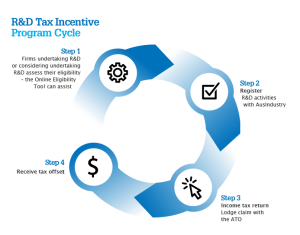Although differences exist between medical research and in vivo cosmetic testing, many similarities exist between the two. Clinical trials on therapeutic and cosmetic products both involve:
- a) humans taking part in a research study
- b) evaluating the efficacy and safety of products designed for the human health and wellbeing
- c) using science to broaden knowledge on certain aspects involving humans
Therefore, for both therapeutic and cosmetic trials, ethical considerations are necessary to ensure the safety of the humans involved in the study.
Today, the fundamental document in the field of human research ethics is the Declaration of Helsinki. The document sets out basic ethical guidelines regarding the protection of human beings involved in research studies. Since 1964 it has undergone six revisions, the first of which in 1975 introduced the concept of oversight by an “independent committee”. In Australia, this is better known as “human research ethics committees” (HREC) or in the USA, the term “Institutional Review Board” (IRB) would be more familiar. Such committees are tasked with reviewing, approving and monitoring biomedical research with the aim of protecting the rights and welfare of the research subjects.
Depending on the project, the Investigator (i.e. doctor or other qualified person responsible for conducting the research project) should consider whether it is necessary to obtain an approval from the ethics committee. In the case of certain efficacy cosmetic studies on healthy volunteers, the risks to the study participant may be minimal. For example, when testing products or ingredients that have been on the market for some time (i.e. their safety has long been documented or otherwise established) on healthy volunteers, using non-invasive skin bio-engineering methods (e.g. instruments for measurements of skin parameters such as hydration, elasticity etc.), the investigator may deem the risk of such project very low. However, should the research project involve novel ingredients, a non-topical product, treatment of a medical or dermatological condition, or invasive assessments, then the project should undergo an independent ethics committee review. Essentially, if there is any element in the research project that has a non-negligible risk to study participants, it should be assessed by an ethics committee.
In Australia the concept of risk assessment is also addressed by the National Statement on Ethical Conduct in Human Research (2007). The document, which officially sets our local guidelines for human research in Australia, states that “research with more than a low level of risk (as defined in paragraph 2.1.6) must be reviewed by an HREC. Research involving no more than low risk may be reviewed under other processes described in paragraphs 5.1.18 to 5.1.21”
The Declaration of Helsinki was the basis for developing the Guidelines for Good Clinical Practice (GCP), an internationally recognised standard governing the ethical and scientific quality for the design, conduct, recording and reporting of clinical trials involving human subjects. The main principles of GCP are outlined by the International Conference of Harmonisation of Technical Requirements for Registration of Pharmaceuticals for Human Use (ICH).
All the general principles of GCP listed in Section 2 of the ICH GCP Guidance apply to cosmetic trials. These are:
“2.1: Clinical trials should be conducted in accordance with the ethical principles that have their origin in the Declaration of Helsinki, and that are consistent with GCP and the applicable regulatory requirement(s).
2.2: Before a trial is initiated, foreseeable risks and inconveniences should be weighed against the anticipated benefit for the individual trial subject and society. A trial should be initiated and continued only if the anticipated benefits justify the risks.
2.3: The rights, safety, and well-being of the trial subjects are the most important considerations and should prevail over interests of science and society.
2.4: The available nonclinical and clinical information on an investigational product should be adequate to support the proposed clinical trial.
2.5: Clinical trials should be scientifically sound, and described in a clear, detailed protocol.
2.6: A trial should be conducted in compliance with the protocol that has received prior institutional review board (IRB)/independent ethics committee (IEC) approval/favourable opinion.
2.7: The medical care given to, and medical decisions made on behalf of, subjects should always be the responsibility of a qualified physician or, when appropriate, of a qualified dentist.
2.8: Each individual involved in conducting a trial should be qualified by education, training, and experience to perform his or her respective task(s).
2.9: Freely given informed consent should be obtained from every subject prior to clinical trial participation.
2.10: All clinical trial information should be recorded, handled, and stored in a way that allows its accurate reporting, interpretation and verification.
2.11: The confidentiality of records that could identify subjects should be protected, respecting the privacy and confidentiality rules in accordance with the applicable regulatory requirement(s).
2.12: Investigational products should be manufactured, handled, and stored in accordance with applicable good manufacturing practice (GMP). They should be used in accordance with the approved protocol.
2.13: Systems with procedures that assure the quality of every aspect of the trial should be implemented.”
In summary, to ensure that the rights, safety, and well-being of study subjects are protected, and that results of clinical studies are credible and accurate, cosmetic testing must adhere to the standards set down by the Declaration of Helsinki. With regards to the principles of ICH GCP, the spirit of GCP and especially its ethical considerations, should also be complied with as much as it is considered relevant for the protection of human beings. In addition, human research in Australia must follow the principles established by the National Statement on Ethical Conduct in Human Research (2007) which is applicable to all types of research involving humans, including cosmetic testing.
———————-
References:
Joachim W. Fluhr, Practical Aspects of Cosmetic Testing, 1st Edition. 2010
National Statement on Ethical Conduct in Human Research (2007) – Updated May 2015
ICH Guideline for Good Clinical Practice



